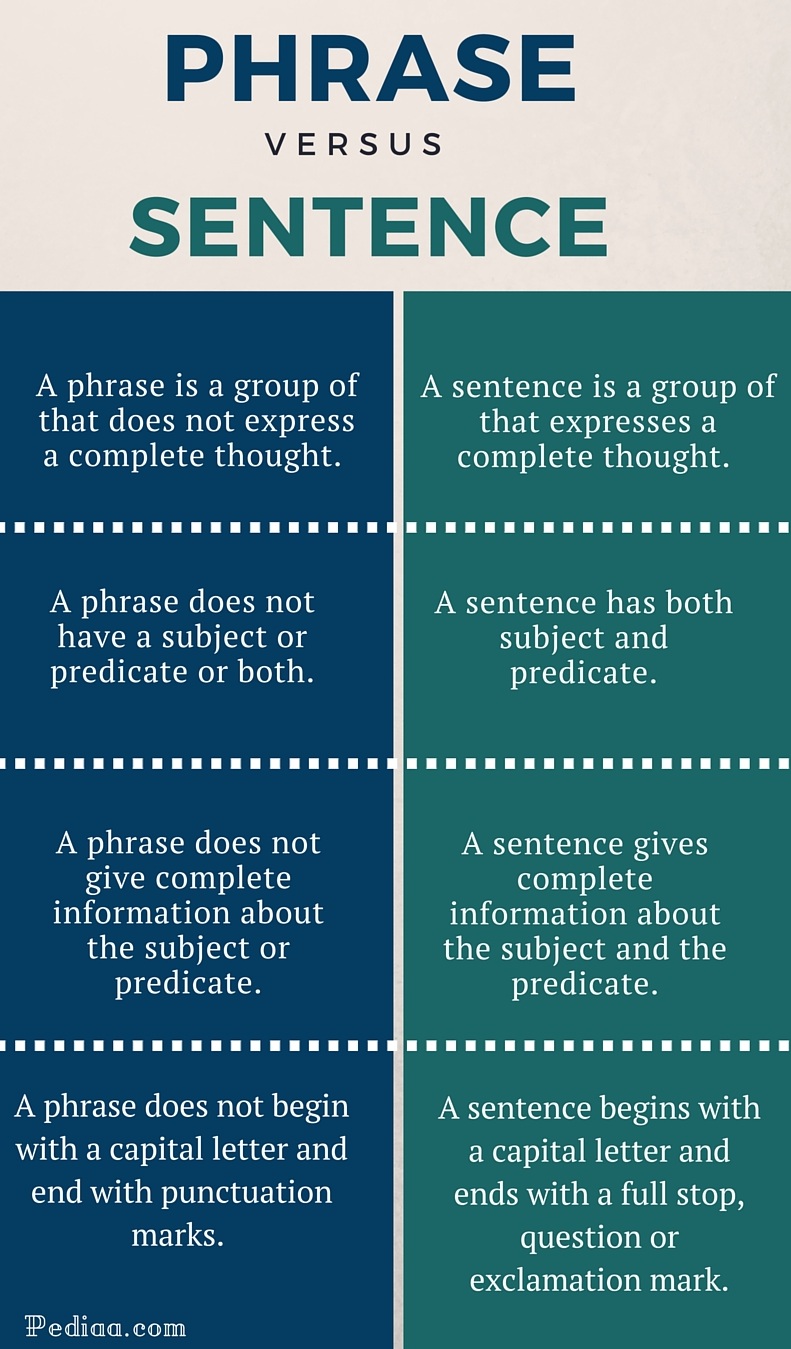Table of Contents
You want to become a teacher, especially to teach English as a Second language. That’s a great thought, as English is the most studied language. And there are many countries where English as a second language is taught often.
You already know that to teach English as a second language is a challenging task for anyone. It doesn’t matter what your background or experience level is you will come across constant new barriers and challenges to teach English as a second language. Like learning any other subject, you will realize that every student has a unique way to master English as a second language.
Upcoming Batches of TEFL Course :-
| Batch | Mode | Price | To Enrol |
|---|---|---|---|
| Starts Every Week | Live Virtual Classroom | 26500 | ENROLL NOW |
Another speed breaker on the road will be the native language of the student, as you will deal with challenges unique to that language. However, with some work and knowledge, you’ll be able to gain the skills you need to teach English as a second language from beginners to advance learners.
So, the million-dollar question is….
How to teach English as a Foreign Language?
There is the usual TEFL, TESOL, and other courses and a lot of other available information to answer the question. But let’s look at the student learning English as a second language.
How do they want to study English as a second language?
Interested? Curious?
Then stick around to find out how students want you to teach English as a second language. And how do they want to learn English as a second language?
The significant point always to remember:
You must catch your students’ interest and retain their attention.
How do you do it?
Carry on reading…
Start With the Basics
What are the building blocks of the English language?
Simply Alphabets and Numbers

Once you start with teaching the alphabet and numbers, it will have a great solid foundation for everything else that your students learn at a later date.
Keep in mind that the pace should be comfortable for all students. This would be particularly easy for students learning English as a second language who are familiar with the alphabet already, i.e., whose native language uses the Latin or English alphabet. The point to be careful about is to push your students enough but not to push them too hard. Finally, finish the alphabet at a pace you are
both comfortable with.
Then, let us talk numbers! Work with your students, so they learn the numbers. As with letters, start from the beginning and carry on forward, depending on their capabilities.
What comes next?
Pronunciation
A significant part as without it learning English as a second language, is incomplete. You may be introducing your students to new sounds, not part of their daily spoken tongue, then, while trying to teach English as a second language, end up dealing with how sounds are different.
Common Words, Phrases, and Sentences

Step-up learning English as a second language with everyday words, phrases, and simple sentences. This would make students you teach English as a second language feels at home and comfortable with it.
As the classes progress, you must ensure that so does the complexity and comprehension level of your students. Then, you reach the platform to teach English as a second language catapult into more complex elements, grammar: Nouns, pronouns, adjectives, verbs, etc. You, students, become well versed in English as a second language.
Simple is the Best
It is often said that the simplest things are the most difficult. But simple is your mantra for success.
Simple is the best; Simple is the Key.
Make “Keeping it Simple” as one of the cornerstones of teaching English as a foreign language. Remember, English might feel natural to you, but it is still early days for your students. And indeed, the addition of extra words or two will result in an overcomplicated sentence for your students.
Let us look at a simple example, suppose you want to ask a student to come forward to the front of the class, how would you word it:
‘Come to the front of the class, please!’ OR ‘Would you mind coming to the front of the class?’
Which one do you think will work better?
The first one, absolutely the correct point.
The second option may be more polite but may be difficult for comprehension.
It is best to use the words and sentences in their simplest form. Start with simple words and lexical resources, and then proceed to more complex vocabulary and further to rules of grammar until your students have understood the basics.
Visualize the Language

Can a language be visual?
Of course, it can be! But how?
This is not the right question; instead, you should ask what does the language do?
Any language is but a medium of communication. But what do you communicate? About things around you, happenings around you, feelings, and so on. Express all that in the visual mode.
No matter what is the average age or level of your class, you must include visuals to teach English as a second language. These could take any form, actual physical objects, or representations. Physical forms could be things present in your class like labelling desks, chairs, computer screens, doors, or you could use things students carry as props. Then you have representations i.e., pictures, handouts, leaflets, smart boards, computer files (graphics), and so on.
How does this help?
Well, by employing visual aids, your students studying English as a second language start relating words/phrases to actual physical objects and pictures they are familiar with and will begin to pick up on new words and revise known ones.
Another thing would create a picture wall in your class so students can increase their repertoire of words. You can develop storyboards on the wall, play a variety of games, and use it to deliver lessons like synonyms, meanings, opposites, etc. A single picture will be equivalent to many words when you teach English as a second language.
The simplest explanation for this is the creation of word association. By using visuals to promote word association, your students will actively build and be able to make more reliable connections between ideas and new concepts they are picking up while learning English as a second language. There are different aids you might consider:
- Pictures and photographs: You can use these as tools to learn to speak and to describe
- Post-cards: These often combine text and pictures, maybe even just a small amount of text.
- Video: Videos are especially good as they have a triple aspect of Visuals, text, and spoken words (including different accents)
- Maps: Maps are a great tool to discuss locations, places, cultures, etc.
- Comic books. Comic books are especially good because visuals and text are paired together.
There are infinite options you can develop using visual aids. They can be utilized to explain the lesson better, make your way to teach English as a second language more interactive, and keep the students’ attention better.
Must Check US Ranked No. 1 TEFL Certification Course Online
Plan and Prepare the Lesson

Lesson Planning: An important weapon in good Teachers’ arsenal.
Is it in yours?
A good teacher knows all about planning and preparation. It is the same when you teach English as a second language. The unpredictable element in every classroom (even learning English as a second language) is the same: your students. So to offset that, your planning and preparation play an important part, as you cannot wing it in the classroom.
You should have the correct number of worksheets, know answers to expected questions. Also, you should have planned to utilize your time during the class while also having prepared backup solutions in the event or a topic is not working well or is not well received.
Normally, you must give a lot of thought about introducing English as a second language in class. Try to understand the students’ need for learning English as a second language and also their circumstances. Then prepare and plan your lesson by that.
Similarly, when you teach English as a second language, pay attention to different topics, think about how you will introduce new topics into a classroom, and whether your students are ready to move on to new things or if anything needs to be discussed again or revisiting. Don’t move onto the new part of the syllabus till you make sure that all your students are comfortable.
We will look at checking student progress, stay with us.
Break Lessons Into Small Pieces.
Learning something new, even English as a second language may be daunting for some people. Primarily when you teach English as the second language to beginners or very young students, it will be a useful technique to break the lesson into several pieces of about 10 minutes. Though the lessons don’t exactly have to be of 10 minutes, it is just as a general guideline. You can go a few minutes over if it will aid your lesson.
This would ensure that your students don’t have to pay attention for a long time. Also, breaking lessons up into small pieces will make sure you don’t lose your students’ attention. Also, at the same time, this tactic will keep the students from being overwhelmed with a lot of information and new things to learn.
After each mini-lesson, you can break the monotone by suing a game or switch to a different topic of suitable. This will help keep the students fresh and make them pay attention. You can change the small lessons periodically and try to incorporate as many different lessons as possible to avoid boredom and to challenge them.
But take care not to add too much information into these small lessons. Keep it simple and let the students learn at their own pace. A lot of information will not be effective for the students, and they may not be able to learn correctly. Instead, try to deliver by changing your strategy often but stick to the same material until your students are comfortable using it.
Bond Together with Activities and Have Fun

Learning a new language can be daunting enough for hours without being bored out of your mind. Students just want an excuse not to turn up. It falls onto you to make sure that your students don’t do a runner out of the door at the sound of the bell.
So, have lots of fun during and around the class! How do you go about it?
Games will help students learn English by making it fun and by making them think in innovative and different ways.
You can do so by weaving your students’ interests into the lesson to keep their attention alive. For example, if your class is of young learners, and they are fans of a specific cartoon, use a popular character from the program in your sessions.
Physical games can also be a great activity and also alleviate boredom for the students. There is an excellent array of games – the class can be separated into depending on the game and class size so that they can compete against each other during the lesson.
And who doesn’t love a good game or doesn’t have a competitive spirit? This will keep the student engaged while you teach English as a second language.
The student will take a more active interest in the class more, and it will be more relatable to your students, making them advance faster in English as a second language.
Create a robust new team for a stronger foundation. If having fun is the first step, use it to build your self-sufficient team who bond with each other throughout learning English as a second language. Become and make friends who have each other’s back.
Let’s make creative activities a tool to teach English as a second language and lay down the groundwork for bonding as a team.
- Indulge in Stories: I have always enjoyed reading and telling stories. Give your students and a set of keywords and ready to be amazed. Give this game an innovative twist with having a set of words to create your stories with and set the magic to work. This technique will help in remembering words, learning application, grammar as well as sentence formation. You can also do this as group work for more fun.
- Rhyming Rhythms: Teach about poems and rhymes and make some of your own. There may be a bit of reluctance to this strategy, but the creation process will be loads of fun and rock their world, making them feel proud of themselves.
- Delicious Debates: This is purely an adult tool; it involves them in a lively discussion. Ask them to speak on a subject, especially impromptu, would be great. A well-chosen debate topic can cultivate even the shyest participant into indulging in something useful, such as learning a new language.
- Jeopardy: Answer the question! You give the answer, and the students supply the answers based on them, talk about starting from the bottom! The game has a point system, so the students compete against each other or make it a team game.
- You can also try memorizing or guessing games that rely on flashcards. For instance, display a flashcard with a hint and see if your students can guess the correct answer.
Be Approachable and Supportive.

Your students could be the youngest of the lot or maybe adult learners. Irrelevant of age or ethnic origin, they need to feel safe and supported during their journey of learning English as a second language.
They should feel free and easy to express themselves fully. They are scared of making a mistake. It is down to you to make them understand that they will make mistakes and learn. Promote an open and inclusive atmosphere in the classroom.
Then, there is the compassion to deal with your students. Be positive and encourage them to speak up. There will be mistakes and errors, sympathetically correct them. Be patient. It will take time for them to formulate an answer. Don’t move on to another student when you see that they’re thinking about the best way to answer your question. This small step from you will go a long way for the student to feel confident and assured that you care.
There should always be reward and recognition on the excellent work done and milestones achieved. Devise a system to recognize the achievements of your students; this will motivate them to go the extra mile and encourage them.
A teacher’s word of praise from a teacher was the highest form of winning in school. And your students will carry the same spirit as for them you are the authority for the English language. This system will have to differ between age groups, but for example, for a young class, set up a point system that will lead to a physical reward at the end of the term.
Learn About the Local Culture

I have always been fascinated by new places, food, and culture, especially anything historical. I am sure it attracts a lot of young people to teach English as a second language abroad.
When you teach English as a second language abroad, there would be many cultural aspects you have to understand and deal with. They will affect not only the teaching but also the classroom culture overall.
The modest of people from a different culture is different. For example, some students might feel that speaking up in a class is not acceptable. Or, they may be reluctant to have a teacher of a particular gender. It is for you to recognize and understand these cultural differences and work gently with them to shift your student’s mindset to work with your teaching techniques.
To deal with the students, you will have to learn and understand the deeply rooted facts about their culture and heritage. There will be certain aspects that need to show respect for cultural norms. For example, in some cultures, it may be considered rude to make eye contact with your teacher, whereas, in the West, it is imperative to signify that you are paying attention.
The first step is always to start showing respect and willingness to understand a new circumstance. Work to create a bond with your students, to make them feel comfortable within your presence, and then work on establishing new boundaries.
You teach English as a second language to your students, take their help to learn about a new culture, history, cuisine, and heritage. This will give about and make your students more inclined towards you.
So, a good starting point is a food. Way to somebody’s heart is through their stomach. You know that!
So, utilize the saying in a literal sense. Food makes us happy. So, take lessons on their traditional food and impart lessons on your delicacies.
You can organize intercultural nights and discuss a lot of exciting things about cultures in English speaking countries. But make sure food is highlighted and there is plenty to go round!
Rules of the Class
The classroom should have the decorum to maintain. Set clear expectations and put a set of rules in place for a structured functioning. This should be simple and easily understandable set on instructions, which your student starts following day 1.
When setting out these rules on the first day, make sure they are verbal and have clear, precise written instructions. Put the written instructions in a prominent place in the classroom, so it is visible at all times. If and when a student steps out of line, refer to these rules and ensure the entire class understands what is acceptable and what is not.
Without set rules in place, there would be no discipline in class, and students will not understand your expectations correctly. There will be a lot of wasted time telling your students off, instead of focusing on either teaching or learning English as a second language.
Use Technology

Technology has evolved at a fast pace, and still, new technology is being introduced daily. We are learning, and our students can be more tech-savvy than us! Teaching methods are continually evolving too, and as a teacher, you should keep abreast too! It is a digital age today, with smart boards and learning apps, the use of technology is vital in an active learning process.
There is a lot of teaching and training material available on the internet. To connect with your tech-savvy student as well as make your class enjoyable, you can use short clips, language apps, and music in your classroom.
Rather than using printed materials, you could also send worksheets, questionnaires, presentations, etc. to their phones or emails. This will allow keeping things in once place even without paper, and students can revisit or prepare for class in advance as well.
Just bear in mind that not all students or countries have the same level of devices or technology. So it’s essential to use these methods after establishing facts.
Social Media
Social Media is also a great way to teach English as a second language. Many of your students will be well versed in Social media. It will prove to be a treasure trove or you to teach colloquial phrases and commonly used words. Besides, it provides an excellent chance for students to learn word usage and to practice.
Monitor Progress Regularly

As a teacher, you are aware of the importance of monitoring the progress of your students regularly. It is no different when you teach English as a foreign language. What is the use of teaching if you don’t know how much your students have learned?
No matter what type of lesson you are teaching or what activity your students are doing, monitoring should always be a constant. Set up a system of checks and balances in the classroom. You can do quizzes after every lesson, homework regularly, and other assignments. These methods will allow you to see their progress and to find out if they are struggling. On the flip side, it will also tell the student about their string and weak points. And as a student, especially young adults and adults, they would appreciate knowing.
So, what can you do?
- If you teach in a classroom environment, walk around and talk to students to find out if they are struggling. Organize revision sessions, spot quizzes, and so on.
- If you teach online, keep in touch with students via regular emails, messages, and set assignments to understand their level of understanding.
- Ensure you are a part of all in class or any activities to understand and monitor them better.
In a Nutshell
Teaching English as a second language is a fun and rewarding career. Once you’ve managed to learn the skills, you’ll enjoy a fulfilling profession that will bring you joy daily. And you’ll also form individual bonds with your students and leave a lasting impact on their lives.
But always listen to what your students say to you, their point view matters. They are the ones who validate your techniques and make you the expert. They are the best ambassadors of your course, and you, as a teacher, like the Henry Harvin TEFL course, recommended and endorsed by students always.
I have tried to encapsulate what a student might expect from you as a teacher and what steps you can take to fulfill those expectations.
Happy Teaching!!
Also Check this Video
FAQs
Q-1. Why Students’ Point of view is Important?
Teaching English as a second language is a fun and rewarding career. Once you’ve managed to learn the skills, you’ll enjoy a fulfilling profession that will bring you joy daily. But always listen to what your students say to you, their point view matters. They are the ones who validate your techniques and make you the expert. They are the best ambassadors of your course and you as a teacher.
Q-2. Does the same Lesson Plan Work for all Students?
As a teacher, you might be called upon to teach at a different level across different places i.e., in-country or abroad. You must understand the level and knowledge of the students and prepare your lesson plan accordingly. It is always better to prepare and plan your lessons in advance. The unpredictable element in every classroom (even learning English as a second language) is the same: your students. So to offset that, your planning and preparation play an important part, as you cannot wing it in the classroom.
Q-3. Why should I Plan Different Activities in Class?
Learning a new language can feel daunting enough for hours at a time without being bored out of your mind. Students just want an excuse not to turn up. It falls onto you to make sure that your students don’t do a runner out of the door at the sound of the bell. Games will help students learn English by making it fun and by making them think in innovative and different ways. You can do so by weaving your students’ interests into the lesson to keep their attention alive. For example, if your class is of young learners, and they are fans of a specific cartoon, use a popular character from the program in your sessions.
Q-4. Why do Visual aids Play an Important role in Teaching?
No matter what is the average age or level of your class, you must include visuals to teach English as a second language. These could take any form, actual physical objects, or representations. Employing visual aids, your students studying relating words/phrases to actual physical objects and pictures they are familiar with and will begin to pick up on new words and revise known ones. The simplest explanation for this is the creation of word association. By using visuals to promote word association, your students will actively build and be able to make more reliable connections between ideas and new concepts they are picking up.
Q-5. Would using Technology not Distract from the Objective of Learning a Language?
Technology has evolved at a fast pace, and still, new technology is being introduced daily. It is a digital age today, with smart boards and learning apps, the use of technology is vital in an active learning process. There is a lot of teaching and training material available on the internet. Connect with your tech-savvy student and make your class enjoyable, you can use short clips, language apps, and music in your classroom. Thus, if used correctly, it will yield productive and positive results.
Recommended Read:
– What is TEFL Certification
– Top 10 TEFL Certification Program in 2021
– Top 15 Free TEFL Certification Courses in 2021
– Top 50 Best TEFL Certification Courses
– TEFL Vs. TESO
Recommended Programs
120-hours TEFL / TESOL
Online Certification Course
Ranked No. 1 Course | 100% interview guaranteed | Live Online Instructor-led TEFL Training & Certification | AAEFL Certified TEFL Course | Qualify for 12,000+ jobs from 6+ countries | With over 100,000 English teaching positions opening every year, immerse into the market of 2 Billion English learners today.
TEFL Certification Online
Course in USA
Ranked No. 1 TEFL Certification Course in USA | 100% Interview Guaranteed | Online Certification course in USA | instructor-led training and certification program of TEFL | Qualify for 12000+ jobs from 6+ countries.
Post Graduate Program
in TEFL
Ranked No. 1 Course | 100% interview guaranteed | Live Online Instructor-led Post Graduate TEFL Training & Certification | AAEFL Certified Post Graduate Program in TEFL | Qualify for 12,000+ jobs from 6+ countries | With over 100,000 English teaching positions opening every year, immerse into the market of 2 Billion English learners today.
Explore Popular Category



![Top 10 Countries for Teaching English Abroad in 2024 [Updated]](https://hh-certificates.sgp1.digitaloceanspaces.com/blog/wp-content/uploads/2020/05/10105810/pasted-image-0-15-270x180.jpg)
![What is EFL? How does EFL differ from ESL? 2024 [Updated]](https://hh-certificates.sgp1.digitaloceanspaces.com/blog/wp-content/uploads/2021/01/24123609/pasted-image-0-18-270x180.jpg)
![Ten Top TEFL Course in Idaho in 2024 [Updated]](https://hh-certificates.sgp1.digitaloceanspaces.com/blog/wp-content/uploads/2020/12/09120053/blog429-270x180.jpg)

![Top 10 TEFL Certification Courses In France: 2024 [Updated]](https://hh-certificates.sgp1.digitaloceanspaces.com/blog/wp-content/uploads/2021/01/24123443/pasted-image-0-16-270x180.jpg)
![Top 10 Online TEFL Certification in Denver: 2024 [Updated]](https://hh-certificates.sgp1.digitaloceanspaces.com/blog/wp-content/uploads/2021/02/20125318/pasted-image-0-2023-02-20T182257.811-270x180.jpg)
.webp)
